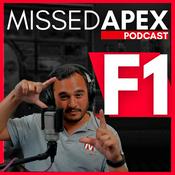325 episodes

Reshaping Professional Golf: The PGA Tour and LIV Golf's Turbulent Standoff
2026/1/08 | 3 mins.
Professional golf is living through the most turbulent era in its modern history, as the long standoff between the PGA Tour and the Saudi backed LIV Golf continues to reshape the sport. The two sides stunned the golf world in June of 2023 when leaders announced an intention to form a commercial partnership meant to unify the men’s professional game, but according to reporting from outlets such as SportsPro Media and Essentially Sports, that proposed deal remains stalled more than two years later and is nowhere near completion. Rory McIlroy, one of the most influential voices on the PGA Tour, has said publicly that the agreement is “still hard to see” because of broken trust, limited communication, and the need for PGA Tour players, as members of a players run organization, to approve any final structure. Essentially Sports notes that the tour’s policy board and player advisory bodies give players effective veto power over a merger, a safeguard that has slowed negotiations and amplified internal debates.On the other side, LIV Golf has used the delay to strengthen its own position. Reports from golf analysts describe LIV shifting from its original fifty four hole format toward a more traditional seventy two hole structure, expanding opportunities for international and Asian players, and aggressively pursuing Official World Golf Ranking status to legitimize its events. This evolution, highlighted by commentary from Ryder Cup veteran Ian Poulter and others, suggests that LIV is preparing for a future where it does not need a partnership to survive. Some players, including two time PGA Tour winner Akshay Bhatia according to On Tap Sports Net, have rejected lucrative LIV offers to stay with the established tour, valuing access to historic events and long term legacy. Others see leverage in the rivalry itself. Bryson DeChambeau has argued, in interviews cited by coaching professional Anthony Middleton, that rival tours and strong personalities create storylines that can be healthy for fan interest if managed properly.Meanwhile, the political and commercial stakes around any PGA and LIV alignment keep rising. Front Office Sports reports that Donald Trump spent much of 2025 trying to position his courses and his influence as a bridge between the circuits, even as major events moved back and forth between the tours and no final agreement was reached. As the calendar moves deeper into the decade, listeners are left with a fractured landscape: the PGA Tour leaning on history, membership control, and traditional structures, and LIV Golf betting on investment, innovation, and a global team model to pull the game in a different direction.Thanks for tuning in, and come back next week for more. This has been a Quiet Please production, and for more from me check out Quiet Please dot A I.For more http://www.quietplease.aiGet the best deals https://amzn.to/3ODvOtaThis content was created in partnership and with the help of Artificial Intelligence AI

Turmoil in Golf: PGA Tour and LIV Merger Faces Deepening Deadlock
2026/1/06 | 2 mins.
The golf world remains in turmoil as the long-promised merger between the PGA Tour and LIV Golf continues to stall despite being announced two and a half years ago. What was supposed to be finalized by the end of 2023 has become mired in dysfunction, broken promises, and deepening resentment between the two sides.According to recent statements from top player Rory McIlroy, the core issue stems from a fundamental breakdown in communication and respect. McIlroy explained that PGA Tour leadership failed to maintain meaningful dialogue with Saudi Arabia's Public Investment Fund, which left the Saudis feeling disrespected. In response, they dug in their heels and refused to budge. The Northern Irishman noted that while tensions have eased slightly, it remains nearly impossible to envision any real resolution on the horizon.The structural challenges run even deeper. The PGA Tour operates as a members' organization where players hold significant voting power through the Player Advisory Council. This means that even if executives reach an agreement with LIV, the entire membership must approve any merger. McIlroy made clear that if players collectively believe a deal is detrimental to their interests, they will vote it down. This democratic structure, while protecting player interests, has become a major obstacle to any unified future.What complicates matters further is that LIV Golf no longer appears desperate to merge. The Saudi-backed league has been strengthening its independent position by shifting to a traditional seventy-two hole format, acquiring trademark rights to new team names, and aggressively pursuing world ranking recognition. Some observers believe that if LIV secures official world golf ranking status, the league may lose all incentive to join forces with the struggling PGA Tour. This would represent a complete reversal from the merger announcement that shocked the golf world in June 2023.Ian Poulter, a prominent LIV player, recently summed up the likelihood of a merger with a single word: nope. Meanwhile, speculation continues to swirl about which PGA Tour players might defect next, suggesting the battle between the tours is far from over.As this saga unfolds, the future of professional golf remains deeply uncertain. Thank you for tuning in today. Please join us next week for more updates on the world of golf and beyond. This has been a Quiet Please production. For more, check out Quiet Please dot A I.For more http://www.quietplease.aiGet the best deals https://amzn.to/3ODvOtaThis content was created in partnership and with the help of Artificial Intelligence AI

Golfing Divide Deepens: PGA Tour and LIV Golf Merger Talks Stall Amidst Power Struggles
2026/1/03 | 2 mins.
The golf world remains gripped by the ongoing saga between the PGA Tour and LIV Golf, with merger talks stalled more than two years after their shocking June 2023 announcement. Rory McIlroy, speaking on The Overlap podcast, explained the delays stem from early missteps like poor communication with Saudi backers, who felt disrespected and dug in their heels, as reported by EssentiallySports. He highlighted the PGA Tour's unique structure as a members' organization, where players hold voting power through the Player Advisory Council, giving them final say on major decisions like a merger. Without collective approval, executives cannot push it through.LIV Golf, meanwhile, has strengthened its position by shifting from 54-hole to 72-hole events, pursuing Official World Golf Ranking points, and expanding globally with more spots for Asian talent and team formats. Ian Poulter echoed McIlroy's skepticism in a fan Q&A, bluntly replying "Nope" to merger prospects, per EssentiallySports. Rumors swirl of LIV's aggressive recruitment for 2026, with Fairway Fortunes reporting whispers of package deals involving PGA stars like Patrick Cantlay and Collin Morikawa, plus interest in Viktor Hovland, Tom Kim, Hideki Matsuyama, and Rickie Fowler. A massive $400 million offer is even dangled for an international icon to bolster LIV's Asian push.McIlroy softened his stance on defectors, stating on The Overlap that LIV players have paid reputational consequences and he'd welcome them back, though it requires PGA member consensus, according to Front Office Sports. Brooks Koepka's recent LIV exit underscores shifting loyalties, while Bryson DeChambeau eyes extensions but keeps options open. With tensions high and no resolution in sight, professional golf's fracture deepens, testing loyalties and the sport's future unity.Thank you for tuning in, listeners. Come back next week for more. This has been a Quiet Please production, and for me, check out Quiet Please Dot A I.For more http://www.quietplease.aiGet the best deals https://amzn.to/3ODvOtaThis content was created in partnership and with the help of Artificial Intelligence AI

Golfing Divide Persists: PGA Tour and LIV Golf Remain Separate Amid Merger Speculation
2026/1/01 | 2 mins.
In the world of professional golf, the divide between the PGA Tour and LIV Golf persists into 2026, with players growing weary of endless merger speculation. According to EssentiallySports, PGA Tour stars like Justin Thomas, Jordan Spieth, and Rory McIlroy have reached a breaking point, dismissing rumors until official signatures appear. Thomas called it mentally draining at the 2025 Players Championship, while Adam Scott noted negotiations have gone silent since a February 2025 White House summit brokered by President Trump. Nearly three years after PGA Tour Commissioner Jay Monahan and LIV Governor Yasir Al-Rumayyan announced a framework agreement, the original December 2023 deadline passed without resolution, leaving two separate tours and no shared events beyond the majors.LIV Golf, funded by Saudi Arabia's Public Investment Fund, reinforces its independence. LIV CEO Scott O'Neil told Reuters in December 2025 that while he chats with PGA Tour CEO Brian Rolapp, no serious talks are underway. Instead, O'Neil envisions a new world order: PGA dominant in the United States, LIV elsewhere. Key players are staying put, with no merger indications, as reported by industry observers. LIV also announced a shift to full 72-hole events in 2026, moving beyond its signature 54-hole format to boost competitiveness.A turning point came with Brooks Koepka's December 2025 exit from LIV's Smash GC for family reasons, including a personal tragedy. He faces a one-year PGA Tour suspension but returns eligible in August 2026, proving reintegration possible without a merger—his major exemptions remain intact for events like the Masters and U.S. Open. Bryson DeChambeau endorsed handling it by the book, validating rules for loyalists like Scottie Scheffler.Complications linger, such as Jon Rahm's massive LIV contract, but the PGA Tour's $1.5 billion private equity deal has eased financial pressures. Players like Spieth argue Saudi partnership is unnecessary. The fairways speak louder than boardrooms: golf thrives separately, with epic majors stealing the show.Thank you for tuning in, listeners. Come back next week for more. This has been a Quiet Please production, and for me, check out Quiet Please Dot A I.For more http://www.quietplease.aiGet the best deals https://amzn.to/3ODvOtaThis content was created in partnership and with the help of Artificial Intelligence AI

Golf's Bitter Divide: PGA Tour and LIV Golf's Standoff Intensifies
2025/12/30 | 2 mins.
Golf's professional landscape remains deeply divided as the fourth year of the rift between the PGA Tour and LIV Golf draws to a close, with no reunification in sight. According to AS USA, early optimism faded after a February summit at the White House hosted by President Donald Trump, where PGA Tour Commissioner Jay Monahan, Tiger Woods, Adam Scott, and LIV Golf overseer Yasir Al-Rumayyan of the Saudi Public Investment Fund gathered, only for talks to stall as each side pursued independent strengthening.The PGA Tour, now led by former NFL executive Brian Rolapp alongside Scott O'Neil, eyes a revamped schedule with fewer, more exclusive events to spotlight top stars like Scottie Scheffler, who joined Tiger Woods as the only players to earn PGA Tour Player of the Year for four straight seasons. This shift, backed by a 1.5 billion dollar infusion from the Strategic Sports Group, aims to rival LIV's financial allure while prioritizing elite competition.LIV Golf, under CEO Scott O'Neil, adapts by extending events to 72 holes starting in 2026, ditching its signature 54-hole format to boost chances of Official World Golf Ranking points, as O'Neil expressed optimism in AOL reports. Investment slows, emphasizing self-sufficiency through franchises like the all-Spanish Fireballs captained by Sergio Garcia, featuring Josele Ballester, David Puig, and Luis Masaveo.AS USA notes that key figures like Monahan and LIV's original CEO Greg Norman have exited, yet hostility lingers, and both tours appear less interdependent. PGA secures majors and TV deals through 2030 with CBS, NBC, and ESPN, while LIV players navigate Asian Tour and DP World Tour paths for major access.For listeners, this deadlock means choosing sides, though unified schedules would simplify following the action. Thank you for tuning in, and come back next week for more. This has been a Quiet Please production—for me, check out Quiet Please Dot A I.For more http://www.quietplease.aiGet the best deals https://amzn.to/3ODvOtaThis content was created in partnership and with the help of Artificial Intelligence AI
More Sports podcasts
Trending Sports podcasts
About Golf News Tracker - Daily
Listen to Golf News Tracker - Daily, ESPN FC and many other podcasts from around the world with the radio.net app
Get the free radio.net app
- Stations and podcasts to bookmark
- Stream via Wi-Fi or Bluetooth
- Supports Carplay & Android Auto
- Many other app features
Get the free radio.net app
- Stations and podcasts to bookmark
- Stream via Wi-Fi or Bluetooth
- Supports Carplay & Android Auto
- Many other app features

Golf News Tracker - Daily
download the app,
start listening.





































